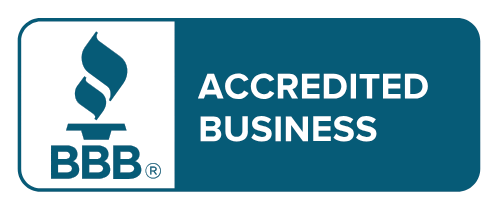The Alarming Impact of Climate Change on Home Building in Charleston: Resilient Solutions for a Sustainable Future

The Alarming Impact of Climate Change on Home Building in Charleston: Resilient Solutions for a Sustainable Future
Climate change is having a big effect on home building in Charleston, South Carolina. As the weather changes, builders must find new ways to keep homes safe and strong. Rising waters, storms, and heat all impact how homes are built today. This article will explore how climate change affects building practices in Charleston and what you can do to build a safe home.
Key Takeaways
- Rising sea levels increase flood risks for homes in Charleston.
- Stronger storms require better materials and designs to keep homes safe.
- Heat waves push builders to consider energy efficiency in designs.
- Building codes are adapting to climate change risks.
- Choosing the right location and materials is crucial for resilience.
For more insights on sustainable living practices that can enhance your home’s resilience, check out our guide on eco-friendly building techniques.
Understanding Climate Change in Charleston
Charleston, with its beautiful waterfront and historic buildings, faces unique challenges. The city is prone to flooding, especially during heavy rains and storms. Rising sea levels mean that areas that were once safe may now be at risk. Builders must think carefully about where they put new homes.
The Risks of Flooding
Flooding is one of the biggest threats to homes in Charleston. The government has updated flood maps to show areas at higher risk. When building a custom home, it is essential to check these maps. You may need to elevate your home to avoid flood damage. This often means building on pilings or raised foundations.
Stronger Storms
Storms are becoming more intense due to climate change. These storms can bring heavy rain, strong winds, and storm surges. Builders need to use stronger materials to withstand these forces. This can mean using impact-resistant windows, reinforced roofs, and durable siding. Building homes that can handle severe weather is crucial for safety and longevity.
Heat Waves and Energy Efficiency
Charleston can get hot, especially in the summer. Heat waves are becoming more common, which makes energy efficiency very important. New homes should be designed to keep cool without using too much energy. This can include good insulation, energy-efficient windows, and smart landscaping. Trees and plants can provide shade, helping to keep homes cooler.
Climate Change Factor Impact on Home Building Mitigation Strategies Rising Sea Levels Increased flood risk Elevate homes above flood levels Stronger Storms Need for durable materials Use impact-resistant windows and roofs Heat Waves Higher energy consumption Incorporate energy-efficient designs Building Codes and Regulations
With the risks of climate change in mind, Charleston's building codes are changing. These codes help ensure that homes can withstand storms and floods. Builders must keep up with these changes to stay compliant.
New Requirements
The city now requires homes in flood-prone areas to be built above certain levels. Builders must also consider stormwater management. This means designing homes and yards in ways that can handle heavy rain without causing flooding. Proper drainage systems are crucial.
Permits and Inspections
Building a new home involves getting the right permits. This ensures that the home meets all safety standards. Inspections are also important to check that everything is built correctly. Working with a licensed builder who knows local laws can help make this process smoother.
Choosing the Right Location
The location of a new home can greatly impact its safety and durability. Some areas are more prone to floods and storms than others. When looking for land to build on, consider these factors.
Flood Zones
Avoid building in designated flood zones when possible. If you must build in these areas, make sure to elevate your home. Check local flood maps to see which areas are at risk.
Proximity to Water
Living near the water can be beautiful, but it comes with risks. Homes closer to the coast may face higher flooding risk. Be aware of how close you want to be to the water and consider the potential impacts.
- Considerations for Location:
- Look into local flood maps to identify flood-prone areas.
- Evaluate the elevation of the land compared to nearby water bodies.
- Research historical weather patterns and storm frequency.
Selecting the Right Materials
The materials you choose for your home can make a big difference in its ability to withstand climate change. Some materials are better suited for high winds and flooding.
Durable Siding and Roofing
Choosing strong siding and roofing materials can protect your home from storms. Materials like fiber cement siding or metal roofs can resist wind and rain better than traditional options.
Energy-Efficient Windows
Windows can be a weak point in a home. Energy-efficient windows help keep homes comfortable and reduce energy costs. Look for double or triple-pane windows that can withstand storms.
Material Type Benefits Recommended Options Siding Durability against storms Fiber cement, metal siding Roofing Wind and rain resistance Metal roofs, impact-resistant shingles Windows Energy efficiency and storm protection Double/triple-pane insulated windows Innovative Building Techniques
With all the changes happening, builders are finding new ways to build homes. These methods focus on safety, efficiency, and sustainability.
Elevated Foundations
Elevating homes is becoming common in Charleston. This not only protects against flooding but can also provide better views. Elevated homes can be designed with stairs or ramps for easy access.
Sustainable Practices
Many builders are now focusing on sustainable practices. This can include using recycled materials, installing solar panels, or using rainwater collection systems. Sustainable homes can save money and reduce environmental impact.
The Role of Homeowners
As a future homeowner, you have a say in how your home is built. You can ask questions and make choices that reflect your values. Be proactive in the building process.
Educate Yourself
Learn about the risks of climate change in your area. Understand what building codes apply to your new home. Being informed will help you make better decisions when working with your builder.
Work with Trusted Professionals
Choose builders who understand the local environment and climate challenges. They can provide valuable insights into building practices that will keep your home safe. Look for builders who have experience with custom homes and who prioritize quality and sustainability.
For comprehensive guidelines on home building regulations and best practices, refer to our resource on local building standards and compliance.
Long-term Planning
Building a home is a long-term investment. Consider how climate change might affect your home in the future. Planning can help protect your investment.
Anticipate Changes
Think about how weather patterns may change. Will your area become more prone to flooding? Will heat waves become more frequent? Build with these changes in mind.
Maintenance and Upkeep
Homes need regular maintenance. This is especially true for homes built in areas at risk for flooding or storms. Keeping up with repairs and updates can help prolong the life of your home.
Community Involvement
Being part of the Charleston community means being aware of local issues. Climate change is a big topic in our area. Engaging with local groups can help you stay informed and proactive.
Join Local Groups
Look for community groups focused on climate awareness and resilience. These groups often share valuable information and resources. They may offer workshops or events that can help you learn more about sustainable living.
Advocate for Change
You can advocate for better building practices in your community. Talk to local leaders about the importance of updating building codes and ensuring homes are safe from climate risks.
Conclusion
Climate change poses real challenges for home building in Charleston. However, by understanding these risks, making informed choices, and working with trusted builders, you can create a safe and comfortable home. Remember to consider location, materials, and design when planning your custom home. Together, we can build a resilient future for all Charleston residents.
Final Thoughts
In conclusion, building a new custom home in Charleston requires careful thought. The impact of climate change is significant, but with the right approach, you can ensure your home stands strong against the elements. By staying informed, choosing the right location, and using durable materials, you are taking important steps toward creating a safe haven for your family.
This is an exciting time to build. Embrace the challenge and make your vision come true while keeping safety and sustainability in mind. Your dream home is possible with thoughtful planning and commitment.






